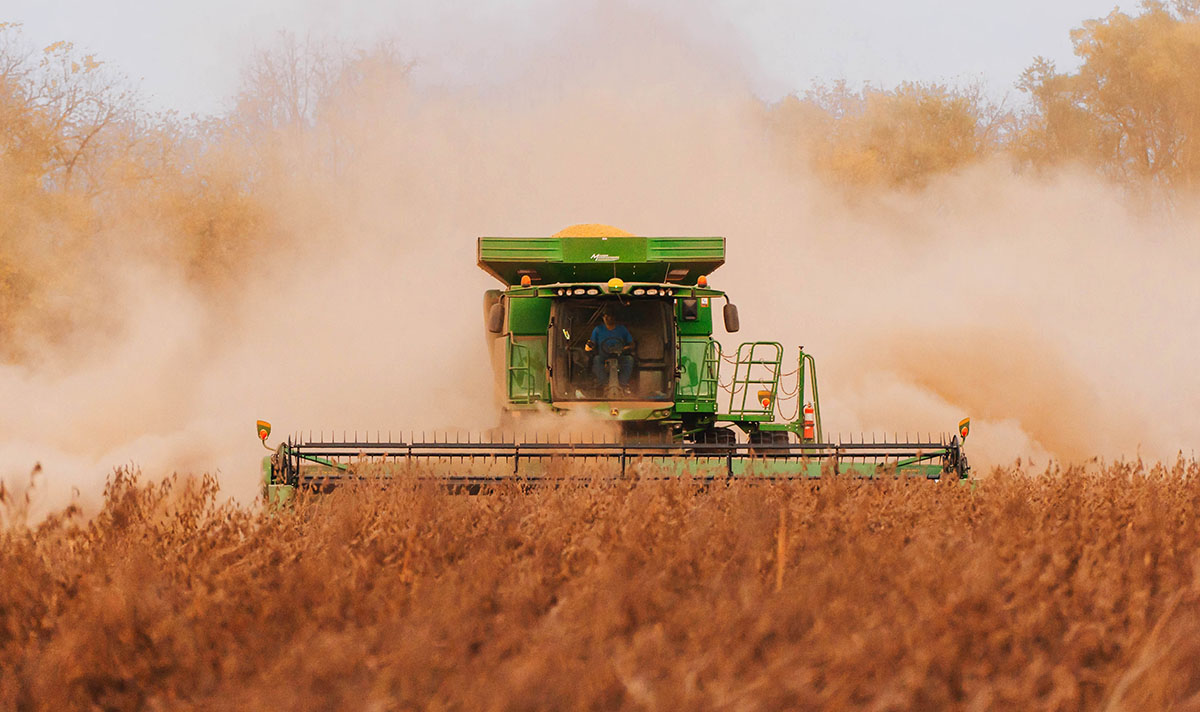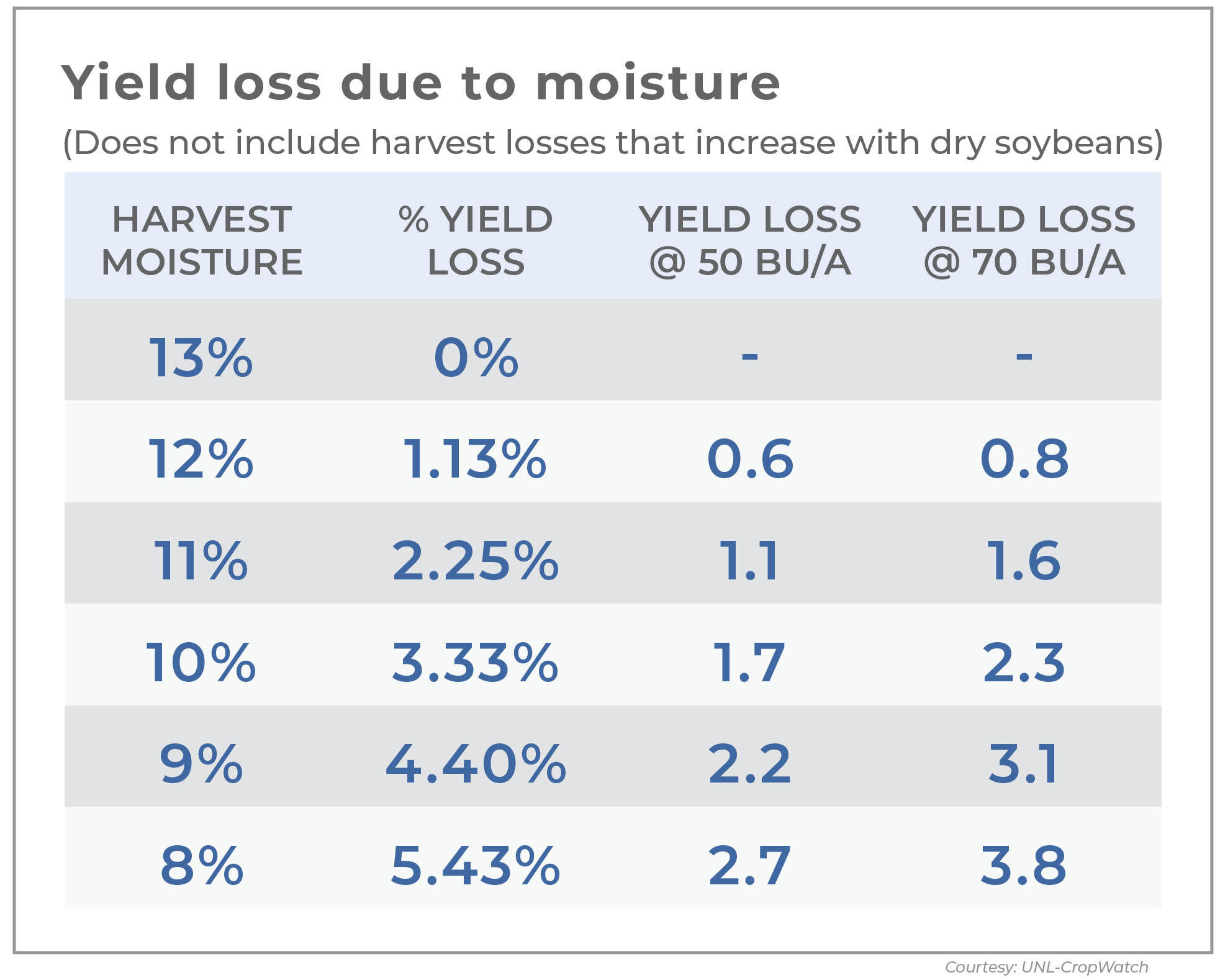
Farmers are urged to keep a close eye on soybean moisture levels as harvest season approaches. (Photo: Iowa Soybean Association / Joclyn Kuboushek)
Moisture management key to protecting yields
September 17, 2025 | Kriss Nelson
Monitoring soybean moisture should be the top priority as farmers prepare for this year’s soybean harvest.
“If this is a year like we had last year, it got hot and super dry, really quick,” says Shane Beck, Iowa Soybean Association research agronomist. “It will be critical to stay ahead of that this year, especially with lower commodity prices, so you save as much yield and water weight as you can. It is probably the most beneficial thing you can do right now.”
Beck says soybeans can lose 5 to 7% of their moisture in a day under hot, windy conditions.
“If soybeans are testing on the higher side one day, it doesn’t mean they will not be ready the next day if we have 90 degrees and windy weather,” says Beck.
Beck advises farmers not to wait until soybeans dry down to the optimal 13% moisture before harvesting.
“I would suggest starting soybean harvest early at 15%,” he says. “You might have to take a little bit of dockage at the elevator, but you might end up coming out ahead versus the dockage you may get if they are way too dry.”

Begin harvesting soybeans at 14% moisture. Harvested soybeans at moisture levels lower than 13% results in yield loss. (Courtesy: UNL-CropWatch)
Looks could be deceiving
Soybeans that still look green from the road may actually be ready to harvest once you’re in the field.
When determining if it is time to begin soybean harvest, Beck advises doing more than windshield scouting.
“It is important to get out into the field and check what is going on,” he says. “Don’t just drive by, and if you see some leaves still out there, assume your soybeans are not dry enough for harvest.”
Harvest setup tips
During harvest, Beck urges operators to perform frequent machinery checks to scout performance.
“Keep checking how the combine is performing; every field is different. Get out multiple times to evaluate and make the adjustments,” he says.
Beck suggests following these three tips for setting your combine up for a successful soybean harvest.
1) Match reel speed to ground speed
Ensure the combine’s reel is not spinning too fast and hitting the soybeans. This could cause the soybeans to shatter and hit the ground before they enter the combine. However, you want to be sure you have it going fast enough so it is feeding the soybeans into the head and not just cutting them off, piling soybean up onto the head and not feeding them through.
2) Rotary or cylinder speed
Increase the speed of your rotary or cylinder until you see split soybeans in your grain tank. Once you see those split soybeans, slow down, but not enough that the combine is not threshing the soybeans completely.
Note this speed will change throughout the day, depending on the moisture of the soybeans. As soybeans dry, they could explode out of the pod before you can get them into the combine head.
Continue to monitor the harvested soybeans. If you find too many splits or foreign material in the grain tank, adjust your speed. It may take time to find that balance.
Check behind the combine to ensure you are not throwing too many soybeans out the back of the combine.
3) Calibrate monitors and sensors
Work with your precision equipment dealer to make sure your precision equipment inside the combine is operating correctly. You can also use scale tickets to help calibrate your yield monitor.
It is also wise to double-check that your moisture sensor is working. You can do this by comparing your findings to a sample taken into the local coop.
Written by Kriss Nelson.
Back